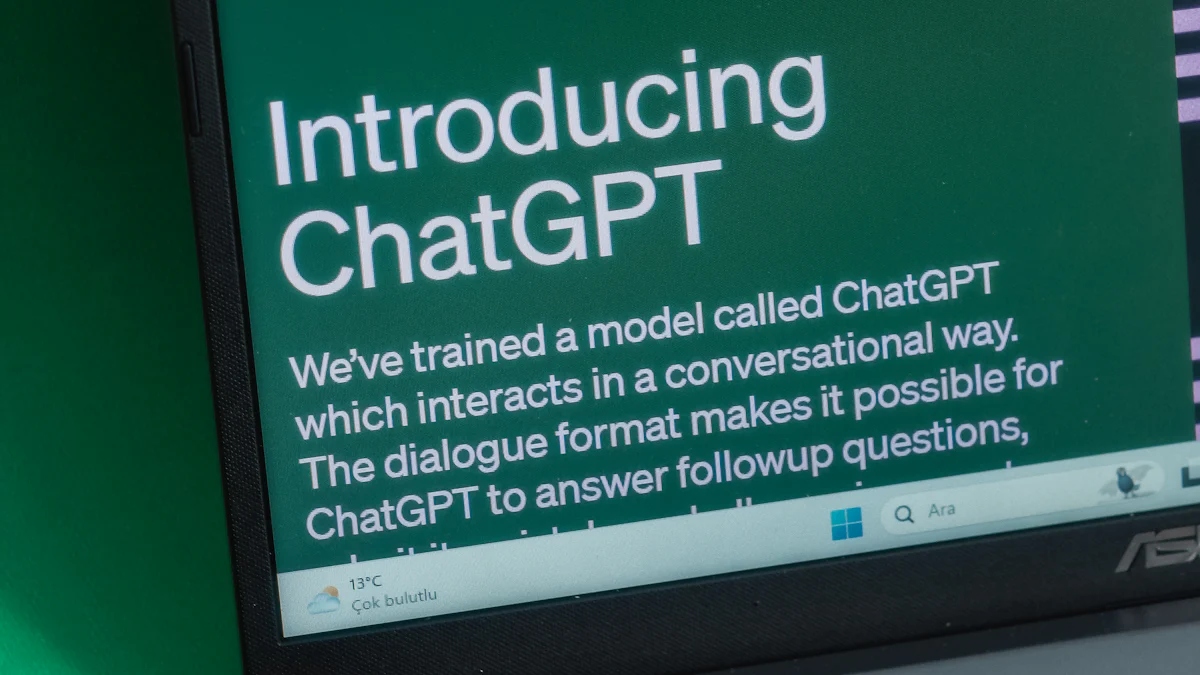Understanding OpenAI Assistants and Chat Differences

When you explore the realm of AI, grasping the distinctions between OpenAI assistants vs chat OpenAI functionalities is crucial. These tools may appear alike initially, but they fulfill different roles. OpenAI assistants excel in task-specific functionalities and integration with applications, making them ideal for complex tasks. Conversely, chat OpenAI functionalities excel in conversational abilities and general-purpose interactions. Understanding these differences aids in selecting the appropriate tool for your needs. For example, 77% of UK respondents expressed satisfaction with their ChatGPT experience, underscoring its effectiveness in user engagement.
Key Takeaways
OpenAI Assistants are designed for task-specific functionalities, making them ideal for managing schedules and automating workflows.
Integration capabilities of OpenAI Assistants allow for seamless connections with various applications, enhancing productivity and reducing errors.
ChatGPT excels in conversational abilities, providing natural and intuitive dialogues that engage users effectively.
The versatility of ChatGPT makes it suitable for a wide range of applications, from customer service to educational support.
OpenAI Assistants offer high efficiency and reliability in task completion, ensuring consistent and accurate results in professional settings.
ChatGPT's adaptability to user input allows it to handle diverse queries, making interactions meaningful and enjoyable.
When choosing between these tools, consider your specific needs: OpenAI Assistants for structured tasks and ChatGPT for engaging conversations.
Capabilities of AI Assistants vs Chat OpenAI

When you dive into the world of AI, understanding the capabilities of different tools is essential. Let's explore how OpenAI Assistants and ChatGPT differ in their functionalities.
OpenAI Assistants
Task-specific functionalities
OpenAI Assistants shine when it comes to handling specific tasks. They are designed to perform particular functions with precision. You can think of them as specialized tools that excel in executing defined tasks efficiently. Whether it's managing schedules, automating workflows, or processing data, these AI assistants are built to deliver high-quality results. Their ability to integrate seamlessly with various applications enhances their effectiveness, making them indispensable in professional settings.
Integration with applications
One of the key features of OpenAI Assistants is their integration capability. They connect with different software and platforms, allowing you to streamline operations. This integration means you can automate repetitive tasks, saving time and reducing errors. The OpenAI Assistants API provides developers with the flexibility to create custom solutions tailored to specific needs. This adaptability makes them a powerful asset in both business and personal productivity environments.
ChatGPT Functionalities
Conversational abilities
ChatGPT stands out for its conversational prowess. It engages users in dialogues that feel natural and intuitive. Imagine having a conversation with a friend who understands context and responds appropriately. That's what ChatGPT offers. Its advanced natural language processing enables it to generate human-like text, making interactions smooth and engaging. Whether you're seeking assistance with writing or just having a casual chat, ChatGPT delivers responses that are both relevant and coherent.
General-purpose interactions
The versatility of ChatGPT extends beyond simple conversations. It adapts to a wide range of applications, from customer service to educational support. You can rely on it for generating creative content, answering queries, or even providing entertainment. Its ability to understand and respond to diverse inputs makes it a valuable tool for enhancing productivity and user engagement. With ChatGPT, you get a blend of reliability and openness, ensuring that your interactions are both meaningful and enjoyable.
Performance Analysis of AI Assistants vs Chat OpenAI
When you evaluate the performance of AI assistants vs chat OpenAI, understanding their strengths and weaknesses becomes essential. Let's delve into how OpenAI Assistants and ChatGPT perform in different scenarios.
OpenAI Assistants
Efficiency in task completion
OpenAI Assistants excel in completing tasks efficiently. They are designed to handle specific functions with precision, making them ideal for structured tasks. Imagine having an assistant that manages your schedule or automates your workflow seamlessly. These AI assistants integrate with various applications, allowing you to streamline operations and save time. Their efficiency in task completion ensures that you achieve high productivity levels without compromising on the quality of work.
Accuracy and reliability
When it comes to accuracy and reliability, OpenAI Assistants stand out. They provide consistent and dependable responses, which is crucial for professional environments. You can trust them to deliver precise results, whether it's processing data or executing complex commands. The built-in features of these assistants, such as server-side conversation history and file searching capabilities, enhance their reliability. This makes them a preferred choice for users who prioritize trust and dependability in their AI tools.
ChatGPT Functionalities
Responsiveness in dialogue
ChatGPT shines in its ability to engage users with responsive dialogue. It offers quick and relevant responses, making conversations feel natural and engaging. Picture yourself chatting with a friend who understands your context and provides insightful feedback. That's the experience ChatGPT delivers. Its advanced natural language processing capabilities ensure that you receive timely and coherent responses, enhancing the overall user experience.
Adaptability to user input
The adaptability of ChatGPT to diverse user inputs sets it apart. It can handle a wide range of applications, from customer service to educational support. Whether you're asking questions, seeking creative content, or just having a casual chat, ChatGPT adjusts its responses to meet your needs. This flexibility makes it a valuable tool for enhancing productivity and user engagement. With ChatGPT, you enjoy a blend of versatility and openness, ensuring that your interactions remain meaningful and enjoyable.
Use Cases for AI Assistants vs Chat OpenAI
Exploring the use cases of AI tools like OpenAI Assistants and ChatGPT can help you understand their potential in different scenarios. Let's dive into how these AI solutions can enhance your daily activities and professional tasks.
OpenAI Assistants
Business and professional applications
OpenAI Assistants excel in business environments. They handle specific tasks with precision, making them invaluable in professional settings. Imagine having an assistant that manages your schedule, automates workflows, and processes data efficiently. These AI assistants integrate seamlessly with various applications, streamlining operations and boosting productivity. The OpenAI Assistants API allows developers to create custom solutions tailored to specific business needs. This adaptability makes them a powerful asset in any professional environment.
Personal productivity tools
In personal settings, OpenAI Assistants shine as productivity tools. They help you organize tasks, set reminders, and manage daily activities. Picture an assistant that keeps track of your appointments and sends timely reminders. These AI tools enhance your personal productivity by automating routine tasks, allowing you to focus on more important activities. Their integration capabilities ensure that you can connect them with your favorite apps, making your life more organized and efficient.
ChatGPT Functionalities
Customer service and support
ChatGPT stands out in customer service and support roles. It engages users with natural and intuitive dialogues, providing quick and relevant responses. Imagine a chat assistant that understands your queries and offers helpful solutions. ChatGPT's advanced natural language processing ensures that users receive timely and coherent responses, enhancing the overall customer experience. Its ability to adapt to diverse inputs makes it a valuable tool for businesses looking to improve their customer support services.
Educational and entertainment purposes
In educational and entertainment contexts, ChatGPT offers versatile applications. It assists with learning by providing explanations, answering questions, and generating creative content. Picture a chat assistant that helps you understand complex topics or entertains you with engaging stories. ChatGPT's adaptability to user input ensures that interactions remain meaningful and enjoyable. Whether you're seeking educational support or entertainment, ChatGPT delivers quality content that meets your needs.
User Experience with AI Assistants vs Chat OpenAI
When you explore the user experience of AI assistants and ChatGPT, you'll notice distinct differences in how they interact with you. Let's dive into these differences to help you understand which tool might suit your needs better.
OpenAI Assistants
User interface and interaction
OpenAI Assistants offer a structured user interface that focuses on task completion. You interact with these assistants through a clear and straightforward interface, designed to help you achieve specific goals efficiently. The OpenAI Assistants API allows developers to create customized interfaces that cater to unique user requirements. This customization ensures that you can tailor the assistant to fit your workflow, enhancing productivity and satisfaction.
Customization and personalization
One of the key features of OpenAI Assistants is their ability to be personalized. You can adjust settings and preferences to align with your specific needs. This level of customization means that the assistant can adapt to your working style, making it a valuable tool for both personal and professional use. The flexibility offered by the API ensures that developers can create solutions that are not only efficient but also highly personalized.
ChatGPT Functionalities
Ease of use and accessibility
ChatGPT excels in ease of use and accessibility. Its conversational interface feels natural and intuitive, allowing you to engage with it effortlessly. Whether you're a tech-savvy individual or someone new to AI, ChatGPT provides an accessible platform for interaction. The simplicity of its design ensures that you can start using it without a steep learning curve, making it a popular choice among users.
Engagement and user satisfaction
The engagement level with ChatGPT is notably high. Users appreciate its ability to understand context and provide relevant responses. In fact, a survey revealed that 77% of UK respondents expressed satisfaction with their ChatGPT experience. This high level of satisfaction stems from its ability to deliver coherent and timely responses, enhancing the overall user experience. The adaptability of ChatGPT to various inputs ensures that your interactions remain engaging and enjoyable.
In wrapping up, understanding the differences between assistants vs chat OpenAI is crucial. OpenAI Assistants excel in task-specific functionalities and integration, making them ideal for complex applications. On the other hand, ChatGPT shines in conversational abilities, providing quick and relevant responses. When choosing between these tools, consider your needs. If you require high-level reasoning and support, AI chat assistants might be your go-to. For engaging dialogues and versatile content creation, ChatGPT offers a quality experience. Your choice should align with your specific requirements and the type of interaction you seek.
FAQ
What is ChatGPT?
ChatGPT is an AI language model developed by OpenAI. It excels in generating human-like text based on the input it receives. You can use it for a variety of tasks, such as writing assistance, answering questions, and even casual conversations. Its versatility makes it a popular choice for both personal and professional use.
How does ChatGPT differ from other AI writing assistants?
ChatGPT stands out due to its advanced natural language processing capabilities. Unlike some open-source AI writing assistants, ChatGPT offers a more refined user experience with its ability to understand context and provide coherent responses. This makes it a preferred tool for those seeking high-quality interactions.
Can ChatGPT be used for business applications?
Yes, ChatGPT can be integrated into various business applications. It can assist with customer service, content creation, and even data analysis. Its adaptability to different tasks makes it a valuable asset for businesses looking to enhance their operations and improve customer engagement.
What are some examples of AI assistants similar to ChatGPT?
AI assistants like Claude and ChatGPT have become essential tools in both work and personal settings. These assistants offer similar functionalities, but the choice between them often depends on specific needs and preferences. Each has unique features that cater to different user requirements.
Is ChatGPT suitable for educational purposes?
Absolutely! ChatGPT can be a great educational tool. It helps students by providing explanations, answering questions, and generating creative content. Its ability to adapt to diverse inputs ensures that learning remains engaging and effective.
How does ChatGPT ensure user satisfaction?
ChatGPT focuses on delivering a seamless user experience by providing quick and relevant responses. Its conversational abilities make interactions feel natural, which enhances user satisfaction. A survey showed that 77% of UK respondents were satisfied with their ChatGPT experience, highlighting its effectiveness in engaging users.
Can ChatGPT be customized for specific tasks?
While ChatGPT offers general-purpose interactions, you can tailor its use to specific tasks through careful prompt engineering. By providing clear and detailed instructions, you can guide ChatGPT to perform tasks that align with your needs, making it a flexible tool for various applications.
What ethical considerations should be kept in mind when using ChatGPT?
When using ChatGPT, it's important to consider ethical aspects such as data privacy and the potential for misuse. OpenAI provides guidelines to ensure responsible use, and users should adhere to these to maintain ethical standards in their interactions with the AI.
How does ChatGPT handle complex queries?
ChatGPT processes complex queries by breaking them down into manageable parts. It uses its advanced language model to understand the context and provide coherent responses. While it excels in many areas, it's important to note that it may not always have the depth of knowledge required for highly specialized topics.
What are the limitations of ChatGPT?
Despite its capabilities, ChatGPT has limitations. It may occasionally produce incorrect or nonsensical answers, and it lacks real-time awareness or understanding of current events. Users should verify critical information and use ChatGPT as a supplementary tool rather than a sole source of truth.
See Also
Engage Your Data: A Complete Manual for Custom ChatGPT Training
Unleashing WhatsApp Chatbots: Harnessing OpenAI's ChatGPT Capabilities
NewOaks AI or Fin: Selecting the Ideal Chatbot for Customer Support
Integrating AI in Social Media: Tailored ChatGPT Solutions for Snapchat
Harnessing Personalization: Unlocking GPT-3 for Enhanced Virtual Assistants

